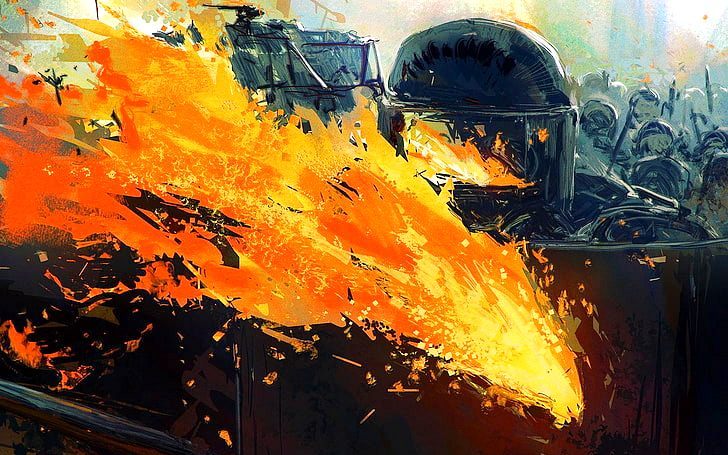Khushi Rastogi
Over recent years, mob lynching has gathered a lot of public attention as instances of Mob-lynching have been increasing in India, especially since 2017. A “Mob” can be defined as two or more individuals, grouped or assembled for a common purpose of lynching i.e. An act or a series of acts, which could be pre-planned or spontaneous to inflict an extra-judicial punishment usually in a form of public execution to show protest and enforce own perceived beliefs, societal and cultural norms or manifesting own prejudices upon an individual, group or community.
It not only intends to inflict harm but is also caused by an ulterior motive of asserting dominance over a particular religious group, community or spread a negative message.
Reasons for Increase in Mob Lynching
We are living in a digital era and a world connected through social media. With cheap internet services, suddenly a large population of Indians belonging different age groups, cultural backgrounds and diverse religious beliefs is suddenly online.

With the increasing flex and usage of social media applications like- Whatsapp, Facebook, Twitter and Instagram etc. among common people.
A very easy but enhancive route has been established for fake news and rumours. Rumours are being spread like a wild fire started with malicious intentions.
These rumours to some extent incite people to take law in their own hands and creates a bubble of limited opinion around the user. In simple words, rumours spread on social media has one of the most important reason for mob lynching all over the India.

With the help of social media, the particular rumour like cow slaughtering, child kidnapping, rape etc are spread in the form of messages and videos without any evidence or knowing the truth, innocent people get killed by the mob.
This misuse of social media applications by a handful of malicious minds are aggravating and leading to deaths and assaults upon innocent people. The infamous and very recent Delhi Riots that took place in early 2020 is the perfect example of how this spread of false information and rumours can effectively lead to inter-religious riots, sedation and mob lynching.
Other than spread of false information, another major reason for increase in mob-lynching incidents in India is the absence of a law.
Currently, there is no particular law upon ‘Mob Lynching’ in India. There are ambiguities which need a law to be cleared, this impunity is a major cause leading mobs to take extreme actions without hesitation or fear of law. Thus, to prevent such crimes, community and state roles increase. State action is important in strict enforcement of laws and punishing criminals.
Punishment for Lynching
As mentioned above, currently there is no particular law or statute to deal with mob attacks and lynching. A person who is involved in the act of mob lynching will be governed under the rules of IPC and CrPC. The punishment for mob lynching is provided under the ambit of the following laws currently-
- Section 223 in The Code Of Criminal Procedure, 1973:
Sub-section (a) of this section provides for persons accused for same offence in the course of same transaction to be charged and be subjected to trial together. Whereas, sub-section (b) also involves persons accused for abetment or attempt to commit such offence.
- Section 302 of Indian Penal Code – This section prescribes punishments for any person guilty of committing a murder – to be sentenced with death or life imprisonment, and shall also be liable to fine.
- Section 304 of Indian Penal Code –
This section deals with punishment for culpable homicide not amounting to murder which may be
-Life imprisonment for life
-Imprisonment for a term which may extend to ten years, and shall also be liable to fine in case the act is done with an intention to kill or cause injury that is likely to cause death.
-Imprisonment for a term which may extend to ten years, or with fine, or with both, if the act is done with the knowledge that it is likely to cause death or the injury that is likely to cause death, but without any intention.
- Section 307 of the Indian Penal Code – This section prescribes punishment for any person found guilty of Attempt to murder. Such person shall be sentenced to imprisonment extending to 10 years and also be liable to fine.
- Section 323 of The Indian Penal Code – This section prescribes punishment to a person found guilty of causing voluntary hurt. A person voluntarily causing hurt to someone else can be sentenced to an imprisonment extending up to 1 year, fine which may extend to One Thousand Rupees, or both.
- Section 34 of The Indian Penal Code – When in furtherance of a common intention, a criminal act is committed by several persons or group, then every individual will be liable for that act, as if it was performed by him alone.
- Section 120B of The Indian Penal Code – Punishment for Criminal Conspiracy
- Section 143 of The Indian Penal Code – A member of unlawful assembly (as defined in s.141 IPC) shall be punished with imprisonment of either description for a term which may extend to six months, or with fine, or with both.
- Section 147 of The Indian Penal Code – Any person guilty of rioting is liable to get punishment of either imprisonment extending to two years, with fine or with both.
Initiative by the States
- Manipur
In pursuance of Supreme Court Guidelines in 2018, Manipur proposed its own bill in 2018, against Lynching. Manipur Bill defines Lynching as “any act or series of acts of violence or aiding, abetting such act/acts thereof, whether spontaneous or planned, by a mob on the grounds of religion, race, caste, sex, place of birth, language, dietary practices, sexual orientation, political affiliation, ethnicity or any other related grounds.”
As per the Bill, there will be Nodal Officers appointed in each district, specifically to deal with lynching instances. It further states that “Police officers who fail to prevent the crime of lynching in their jurisdiction are liable to be imprisoned for a term that may extend from one to three years with a fine limit of ₹50,000”.
This provision is in consonance of section 11 of MASUKA (Manav Suraksha Kanoon) Draft-Bill drafted in 2017 in pursuance of a National Campaign against Mob Lynching. It also removes protection which is extended to Public Officials for the any offence committed during discharge of duty.
“Under the Manipur law no prior sanction is required to register crimes against public officials who fail in their duties to prevent hate crimes such as lynching”. Law further affixes duty upon the State to make arrangements for protection of witnesses and victims against any “any kind of intimidation, coercion, inducement, violence or threats of violence”.
- Rajasthan
After Manipur, Rajasthan also proposed a its own Bill. In pursuance of SC guidelines, it also provides for appointment of a Nodal Officer and act as coordinators. The Bill states that “when a mob attack ends in death, it is punishable with life imprisonment and a fine of up to ₹5 lakh”.
- West Bengal
West Bengal has also proposed a bill which provides punishment of death penalty, or Life imprisonment, and a fine up to Five Lakh Rupees, to any person or group of persons found guilty of Lynching. It is the most rigid bill amongst all.
Landmark Judgements
- Nandini Sundar and others v. State of Chhattisgarh[1]
In this ground-breaking decision of Supreme Court upon use of SPOs (Special Police Officers) by the state government, with regard to the armed insurgency in Chhattisgarh.
It was alleged that there were widespread human right violations taking place in the district of Dantewada and surrounding areas due to the Maoist/Naxalite Insurgency in the state and the counter insurgency offensives launched by the state government authorities. Petitioners specifically referred to the state practice of hiring local tribe youth as SPOs and providing them arms to fight the Naxalites/Maoists.
Petitioners claimed that this practice is illegal and unconstitutional. However, the respondent state argued that it had a right under constitution to arm the local tribal youth to fight these extremist elements.
In its ruling, Supreme Court of India reaffirmed the unconstitutional nature of such action and stated that state has to act in accordance of the rule of law. Court specifically addressed the “ill-treatment, torture, murder, and forced displacement suffered by local people, reducing them to a ‘sub-human existence’ resulting from disproportionate action on the part of the State of Chhattisgarh”.
Accordingly, Court ordered the state of Chhattisgarh to stop using SPOs immediately; stop the funding to SPOs; recall all firearms which were issued to SPOs; commit to filing of FIRs and to ensure diligent prosecution of these SPOs for the crimes committed by them.
- Mohd. Haroon and others v. Union of India and another[2]
A writ petition was filed in relation to the riots erupted in and around District Muzaffarnagar, Uttar Pradesh as a result of communal tension in the city, which forced people to abandon their homes out of anxiety and fear.
Supreme Court held that “that the victims of mob violence cannot be discriminated against on the basis of community or religion. The relief of rehabilitation and compensation should be given to all communities”.
Further the court observed the duty of State association to work in concurrence and association of intelligence agencies of both- The State and Centre to prevent any reoccurrence of communal riots in any part of the state. And if any State Officer duty bound to maintain law and order is found negligent in disposal of his duties, then he must be brought under the ambit of law.
- Tehseen S. Poonawalla v. Union of India and Ors.[3]
In this judgement, Supreme Court issued guidelines for State Governments, which were not restricted to specific acts regarding Cow Vigilantism but also covered acts of mob lynching. These guidelines can broadly be summarised as:
- A Nodal Officer, not below the rank of a Superintendent of Police, to be appointed in each District to prevent mob lynching and cow vigilantism.
- State Governments need to recognize the districts affected by acts of lynching or lynching incidents that took place in the past, within 3 weeks from this judgement.
- An automatic FIR under Section153A, IPC (promoting enmity between different groups) will be registered against individuals who incite people and spread fake news on social media.
- The State Govssernments shall prepare a lynching/mob violence victim compensation scheme under Section 357 a of CrPC within one month from the date of the judgment.
- Further, mob violence/lynching cases need to be tried in fast track courts in each district – trial should be completed within the period of 6 months
- And also recommended for Parliament to create lynching/mob-violence as a separate offence which should duly be punished.
Conclusion
As we know, in a diverse country like India, our constitution emphasizes upon maintaining and promoting secularism. This secularism is the root of existence providing support to our democratic system.
However, these acts of communal violence, hate crimes and mob-lynching is not only endangering the secularism our country but is also a huge blemish upon our legal system. Current laws are not proving to be effective in deterring people who thinks its justified to take justice delivering in their own hands.
What we need is a more rigid law which ensures zero tolerance for mob-lynching/violence. As discussed above, Supreme Court has advised State Governments to enact such laws but not many states are willing to comply with this. We need more states like Manipur and Rajasthan to come forward to eliminate this imminent threat to country’s secularism.
-
WRIT PETITION (CIVIL) NO. 250 OF 2007 SC ↑
-
WRIT PETITION (CRIMINAL) NO. 155 OF 2013 SC ↑
-
WRIT PETITION (CIVIL) NO. 754 OF 2016 SC ↑
- Showing the way: on Manipur’s new anti-lynching law- THE HINDU
- Rajasthan Assembly passes anti lynching Bill

